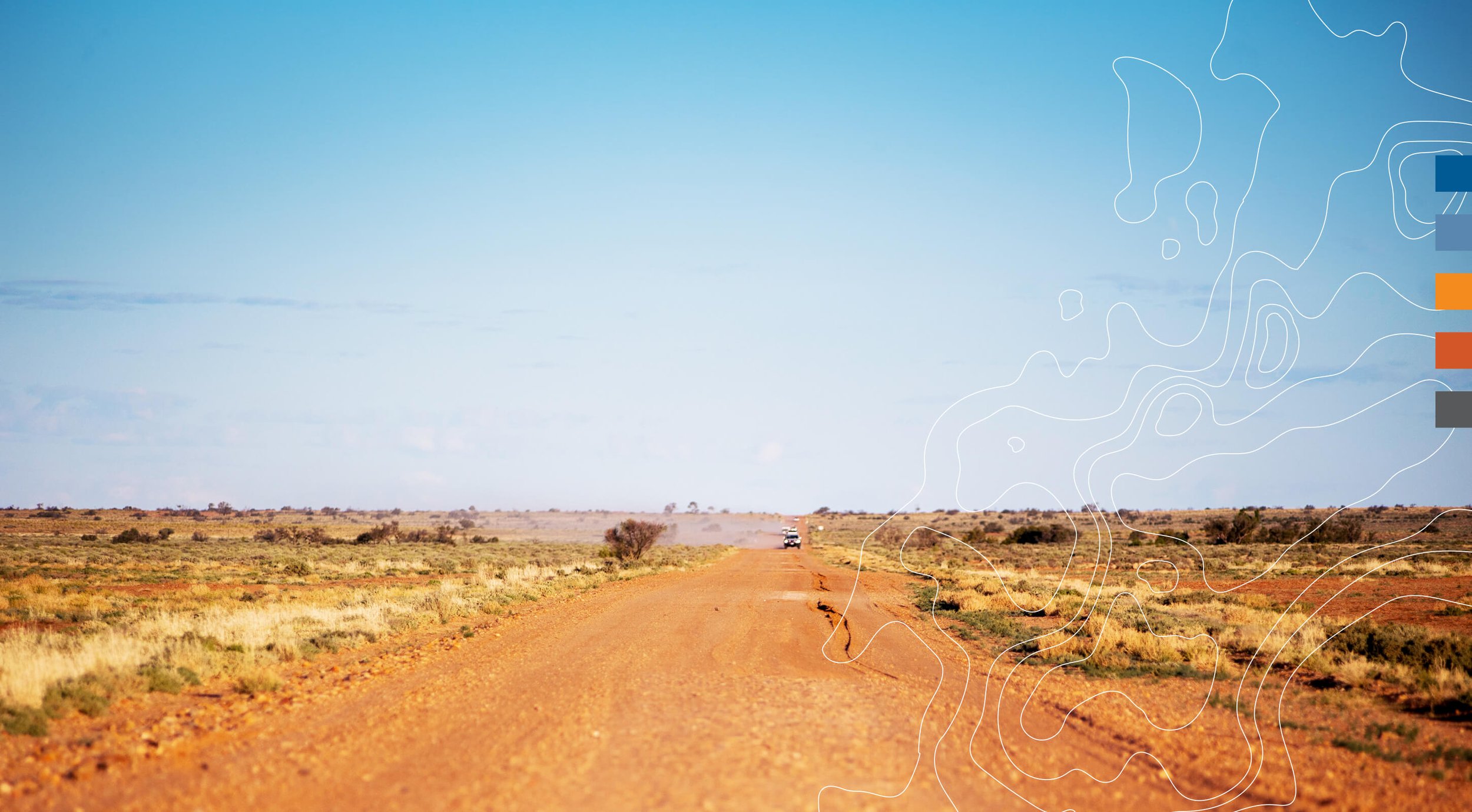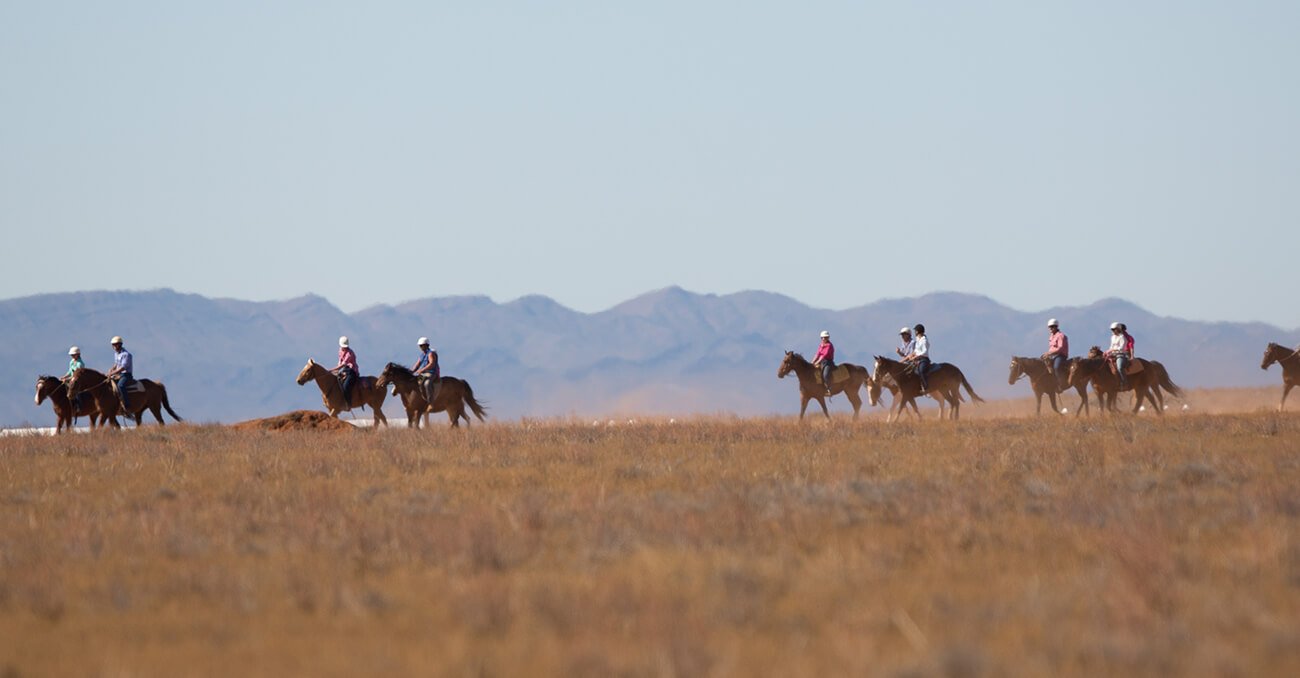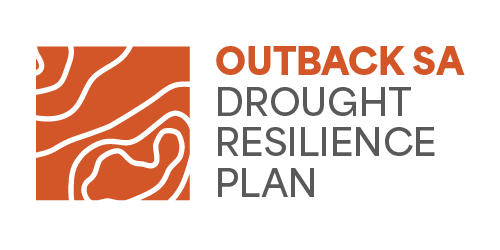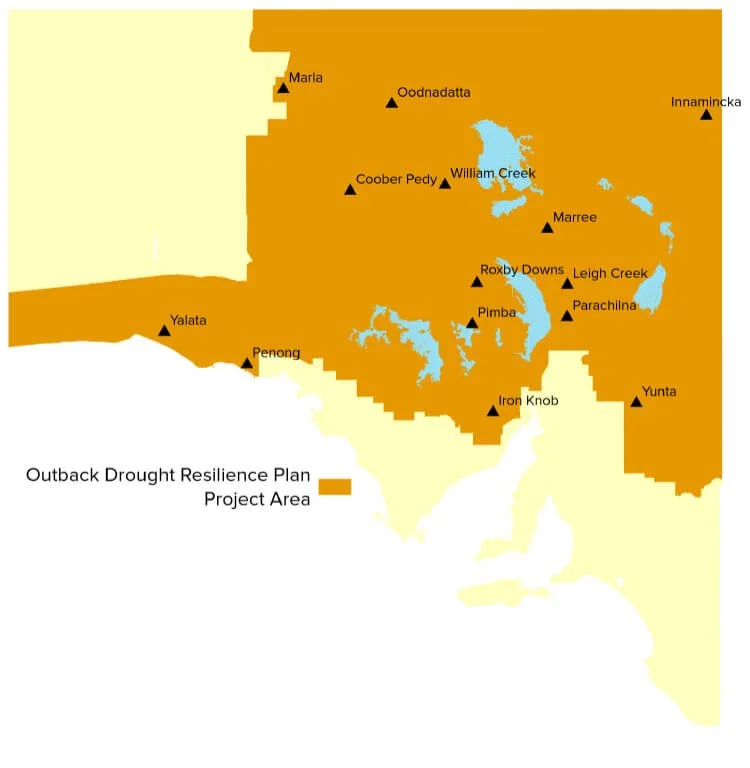
Planning together for Outback SA.

The plan
Outback SA has resilient communities, industries and environments and a strong history of responding to drought and climate variability. This dates back thousands of years with our First Nations communities thriving in this harsh country through their intimate knowledge of and connection to their land. Continuing to build our resilience is important in order to adapt to the global and regional changes we are expecting to see in the coming years.
The Outback SA Drought Resilience Steering Committee are currently preparing a Regional Drought Resilience Plan for the Outback SA region to deliver just this.
The Plan will help guide our communities, environments and economies to ensure they are as prepared as they can be for the droughts we will face in the future. We want not just to survive but to thrive through drought times, and continue to be strong and adaptable to anything that comes our way.
Drought resilience planning brings together regional organisations, communities, First Nations peoples, industries and government agencies to prepare for future drought risk and identify priority projects and actions to build resilience against drought. These might include initiatives to build community connectedness and wellbeing, help locals learn the skills they need to adapt their businesses to drought conditions, reduce total grazing pressure during drought times, invest in outback infrastructure and services, explore and adopt alternative land management practices to adapt to changing pressures and conditions, fund on-ground community projects, create the time and space to develop meaningful shared connections and partnerships with First Nations peoples, and much more.
The region
For the purposes of this project, the Outback SA region encompasses the unincorporated area of South Australia, as well as the Roxby Downs and Coober Pedy Council areas.
This covers almost two thirds of South Australia. It takes up the state’s north-east corner to its borders with the APY Lands, New South Wales, Queensland and Northern Territory. The region also encompasses the far west coast from Penong to the Western Australian border.
This region includes some of the driest parts of Australia. We acknowledge and pay our respects to the First Nations of the region who have thrived in this harsh and beautiful environment since the time of their ancestors.

Steering committee
The Outback SA Drought Resilience Steering Committee was established to deliver the Outback SA Regional Drought Resilience Plan.
The Steering Committee is comprised of the Outback Communities Authority, SA Arid Lands Landscape Board, Regional Development Australia Far North, Primary Industries and Regions South Australia and the SA Drought Hub.
The Steering Committee will drive the project, contributing their deep local expertise and established regional relationships to the plan’s development. Environment, engagement and strategic planning specialists URPS have been engaged to prepare the plan and deliver the associated stakeholder and community engagement.
Funding source
This project is part of the Regional Drought Resilience Planning program and is jointly funded through the Australian Government’s Future Drought Fund and the Government of South Australia.
The Outback SA region is one of many regions across Australia to prepare a Regional Drought Resilience Plan through the Future Drought Fund.
The process
The Outback SA Regional Drought Resilience Plan will be prepared by combining regional experiences, knowledge and priorities with a strong literature base.
We want to build off what we already have. By learning from what has worked well or hasn’t worked well in the past, we can drive meaningful change.
We know that every region needs a highly tailored approach, and that a one-size-fits-all approach will never work for the Outback SA region. That’s why listening to our communities to understand exactly what they need is such an important part of the project.
The project will have five key phases.
Phase 1:
Literature review and knowledge stocktake
December 2023-February 2024
Desktop review of regional plans, strategies, projects and research, and literature on leading resilience practice, planning and implementation.
Key informant interviews with the experts including technical experts in drought, pastoralism, community development, natural resource management and economic development, local organisations who work in the region on a daily basis, and drought resilience planners from other regions around Australia.
Phase 2:
Engaging with our regions
March – April 2024
Extensive engagement with our communities through:
A town-by-town regional listening tour with a series of workshops and drop-in sessions
Online workshops
Online survey.
Learn more about how to get involved.
Phase 3:
Developing the draft Regional Drought Resilience Plan
April – May 2024
Writing the draft Outback SA Regional Drought Resilience Plan from the findings of phase 1 and 2 of the project.
Phase 4:
Review and refine
June – July 2024
Gathering feedback on the draft Plan from our communities, State Government, CSIRO and the Federal Government.
Adjusting the Plan to ensure that it meets the needs of all community members and stakeholders.
Phase 5:
Implementation
Late 2024
Once the plan has been endorsed by the Federal Minister for Agriculture, Fisheries and Forestry, we’ll kick start implementing the Plan and enhancing drought resilience in our region.
This program is jointly funded through the Australian Government’s Future Drought Fund and the Government of South Australia.








